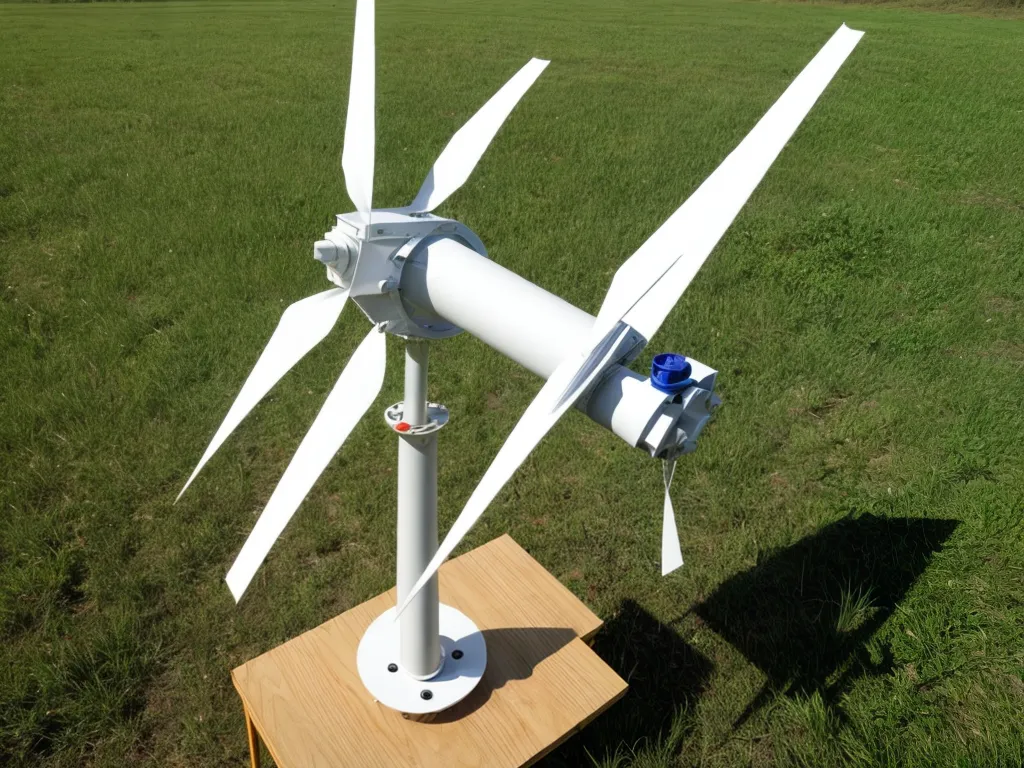
How to Build Your Own Small-Scale Wind Turbine on a Budget
Building your own small-scale wind turbine can be a fun and rewarding project. With some planning and ingenuity, you can build an efficient turbine on a budget using commonly available materials. Here is a step-by-step guide on how I built my own small wind turbine on a budget.
Choosing a Location
The first step is choosing a good location for your wind turbine. For optimal performance, you'll want an elevated, open area with consistent wind speeds of at least 10 mph. Consider mounting it on a roof, hilltop, or tower. Avoid turbulent air flow caused by obstacles like trees or buildings. Ideally, your location should have annual average wind speeds of at least 12 mph at the proposed turbine height.
Sizing the Turbine
The size of your wind turbine will depend on your goals, space constraints, and budget. For a small budget DIY project, I'd recommend a turbine with 3-6 foot diameter blades. This size can effectively charge batteries or power small loads in homes or cabins. Larger turbines are more expensive but can generate more power.
Use online wind maps to estimate your site's wind power density. Determine the swept area of your proposed turbine design (blade diameter x blade diameter x 3.14). You can then calculate the turbine's potential power output for your location.
Blade Design and Materials
The blades are the most important part of harvesting wind energy. Their aerodynamic shape and efficiency will heavily impact turbine performance.
For small turbines, many DIY builders use wood blades with a classic airfoil shape. Medium density fiberboard with laminated wood veneer works well. Plywood and dimensional lumber can also be used.
Other options include repurposing plastic or aluminum blades from non-working turbines, or molding new blades from fiberglass. However, these materials may exceed a small budget.
Generator and Electronics
You'll need an electrical generator and control equipment to convert the turbine rotation into usable electricity.
For a basic battery-charging turbine, a permanent magnet DC motor rewired to act as a generator can work well. More complex turbines use purpose-built 3-phase alternators. If more suitable generators are available, repurposing them can save money.
Charge controllers, batteries, and inverters will be needed to store and condition the power. Automotive alternators already include a rectifier, making them attractive options.
Tower Design
The turbine needs to be raised high above obstructions to reach stronger winds. Designing a tower is an important structural consideration.
For lightweight small turbines, a guyed lattice tower made from metal pipe is a common affordable choice. Pipes are easy to source and assemble. Guy wires provide lateral support.
Other options include tubular poles, wooden towers, or tilt-up designs. Just ensure the tower is tall enough to elevate the turbine above nearby obstacles.
Assembly and Installation
Once you've collected all the materials and components, it's time for assembly. Refer to turbine design guides for help constructing blades, nacelles, towers, and other parts specific to your plans.
Safety is paramount when installing your turbine. Carefully follow guidelines for erecting towers. Properly anchor guy wires and use gin poles or lifts for heavy components. Consult local regulations as home wind turbines may require permits.
Testing and Troubleshooting
With assembly complete, it's finally time to start generating power! Begin testing at low wind speeds, then gradually ramp up to higher operation. Monitor voltage output. Troubleshoot any underperformance issues.
Common problems include blade imbalance, generator inefficiencies, and suboptimal tower heights. Careful tweaking of components and settings can often resolve problems and optimize power production. Don't get discouraged!
With persistence and ingenuity, you can build a remarkably efficient small wind turbine on a budget. Let me know if you try this project yourself. I'm happy to provide more guidance on the process I used to build my own successful turbine.